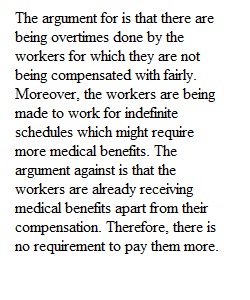


Q Case Discussion 26: The Cheese Board Collective The Cheese Board Collective is a worker-owned cooperative on Shattuck Avenue in Berkeley, California. It started as a small cheese store in 1967, and in 1971 the two original owners sold their business to their employees to create a 100% worker-owned business in which they both remained members. The cheese store and bakery, which also has an espresso bar, sells around 400 different cheese and an extensive selection of freshly baked breads and pastries. A couple of doors down from the cheese store and bakery, the co-op runs a pizzeria that sells a vegetarian “pizza of the day” (using unusual cheeses from the cheese shop) for lunch and dinner, Tuesday to Saturday, with a new recipe each day of the week. The upcoming pizzas of the day are advertised on the co-op’s website for the next six days. The pizzeria also serves salad, cookies, sodas, beer, and wine, and it features live music at both lunch and dinner. The line of waiting customers often extends outside the pizzeria. The co-op published a book in 2003 called The Cheese Board Collective Works, which contains over 100 recipes for the coop’s classic breads, pastries, and pizzas, plus a history of the collective and an extensive cheese primer. The co-op has two types of workers: members (also known as worker-owners) and candidates. Candidates are new hires who must serve a 6-month candidacy period before becoming members (i.e., owners). Candidates work primarily at either the pizzeria or cheese shop and bakery where they are initially hired. All workers receive a “living wage” of $24 per hour, plus medical benefits. In addition, worker-owners receive a share of the co-op’s profits (based on their number of hours worked), dental insurance, retirement plans, and other benefits. Members work closely together. Everyone is given the opportunity to learn all aspects of the business and is involved in every aspect of operating the business. All workers are required to attend business meetings (typically the first Monday of every month) where the group makes decisions using a modified consensus approach; candidates are paid for their attendance. Although total weekly work hours are standard for full-time work (i.e., about 40), the schedules are often non-standard and require flexibility. Workers must be able to work shifts that start at 6am or that end at 9pm at the pizzeria, or that start at 3:30am or end at 7:30pm at the cheese shop and bakery. They must be able to work during the holiday season and on Fridays and Saturdays, and they must be available to cover shifts on short notice. The co-op cannot guarantee a set numbers of hours per week initially. Job tasks are largely as follows at the two shops: Bakery and cheese shop: waiting on customers, selling cheese, working the bread and coffee line, making coffee drinks, making dough, rolling and baking breads, ordering, committee work and other organizational duties outside of scheduled shift work, continuously learning about the newest cheeses and bread production techniques, cleaning up. Pizzeria: preparing ingredients, making dough, building and baking pizzas, cashiering, ordering, committee work and other organizational duties outside of scheduled shift work, cleaning up. 1. At the monthly business meeting, members are discussing whether to raise the co-op’s hourly “living wage” (for everyone) from $24 to $28. What are the arguments for and against? © Jed DeVaro 2020 2. At the monthly business meeting, members are discussing whether to lower the co-op’s hourly “living wage” (for everyone) from $24 to $20. What are the arguments for and against? 3. Vacancies at the co-op arise periodically when members quit. One potential strategy for managing vacancies is to set an extremely high “bar” so that relatively few candidates are granted member status after their 6-month evaluation periods end. Although that strategy necessitates more frequent hiring of what is effectively a temporary workforce, it saves on compensation costs (e.g., candidates don’t receive dental insurance, retirement plans, and other benefits, plus the co-op’s profit doesn’t get shared with them) which puts more money into the pockets of fewer owners. An alternative strategy is to hire with every intention of making the candidate an owner, and indeed the job ad states that, “We are looking for a longterm commitment, preferably five years or more.” a. What are the relative advantages and disadvantages of these two alternative strategies? b. Why is a commitment of 5+ years likely important to the co-op? Should it be? c. How does the nature of work at the co-op, and the specific job tasks at the two shops, affect your answers to a) and b), if at all? 4. Explain how workers’ incentives at the co-op relate to (i) the design of the compensation system, (ii) the nature of ownership of the business, (iii) the dispersion of financial rewards among the workers (i.e., the degree to which there is compression in workers’ incomes). a. Are there any incentive problems that you anticipate at the co-op? b. If so, what ideas do you have for fixing them? c. Explain how your answers depend, if at all, on the number of members the co-op has. 5. What are the main advantages and disadvantages of organizing production as a co-op as opposed to a traditional profit-maximizing firm? 6. The co-op organizational form seems to have been successful at The Cheese Board for nearly half a century. But such worker-owned co-ops are relatively rare. a. What likely explains the success of the co-op organizational form at The Cheese Board? b. Which types of production settings would you expect to be particularly successful as coops, as opposed to traditional firms? And what types of settings would be better as traditional firms? Note: Background for this case is extracted from The Cheese Board Collective’s website (http://cheeseboardcollective.coop/).
View Related Questions